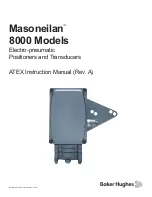
LUPUS2K - VOLANS2K
- TECHNICAL MANUAL -
090001113
[email protected]
elmospa.com
18
13. OPERATING MODES
13.1 Walk test - System test
The Walk test condition can be activated via keypad, from the SYSTEM TEST » ZONE TEST menu.
The beginning of the operating mode is indicated by three beeps of the internal buzzer and by the LED blinking.
After exiting the Walk test mode, the internal buzzer will enter operating mode, whose configuration depends on browser
programming.
13.2 Operation
In operative conditions, the detector only uses the cover LED, for both alarm or tamper conditions. These conditions can
also be indicated by the internal buzzer if it has been programmed for alarm or for alarm and reset. The buzzer is disabled
by default.
13.3 Supervision
In case you have made some changes in supervision times (with subsequent memorization in control unit), they will be
updated to the set values upon the first transmission. Therefore, if some devices are temporarily not powered, the control
unit will signal them considering a different supervision time than the one just set.
After the next power-on of the devices, the supervision time will be updated to the set value. In case of subsequent detector
power failure, the system will keep the current supervision time.
In case you change the supervision time after a control unit reset, it will be updated at the first transmission.
Namely, immediately after the main reset, the supervision time that will be considered is the current one; any devices that
are not aligned within that time will enter the missed supervision state.
13.4 Multi-channel reception and strategy
It can be set in the NG-TRX Options page.
If the function is ACTIVE (default), the control unit is able to receive on all channels; if it is not active, the control unit
receives on one channel at a time. It is possible to increase reliability, when there are interferences on a specific channel,
by turning off the multi-channel reception.
Note
: We suggest that you disable the Multi-channel reception when you are aware of the existence of radio interference
on one or more channels. In this case the control unit will receive only on the default/preferential channel, although the
detector performs transmission attempts on all channels.
13.5 Default/preferential channel
Default channel
In case of radio interferences, it is recommended to set the most free channel as the default channel (you can check it
through the monitoring functions on the browser and control unit).
In case of strong interferences, it is possible to increase the reliability of the communication by disabling the multi-channel
reception.
Preferential channel
The variation of the preferential channel is performed in case of interference detection. The control unit can change the
preferential channel independently of the activation of multi-channel reception mode.



































